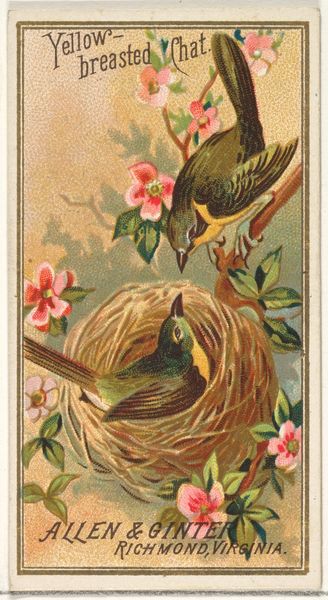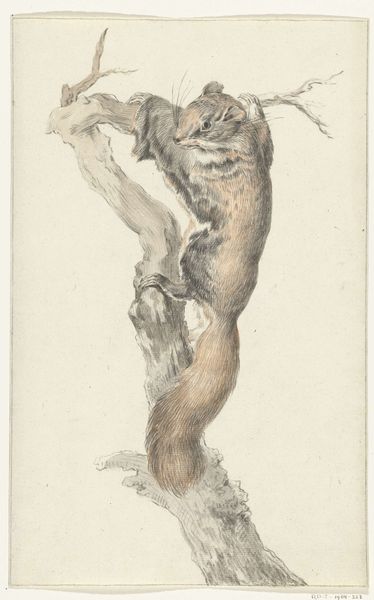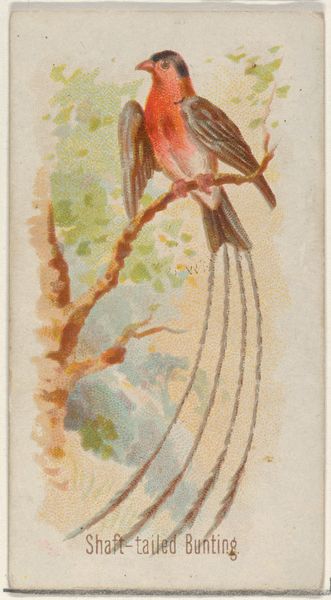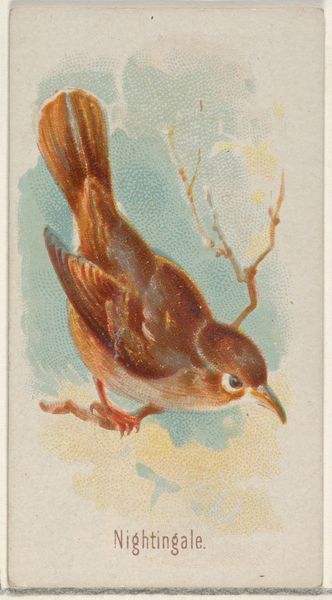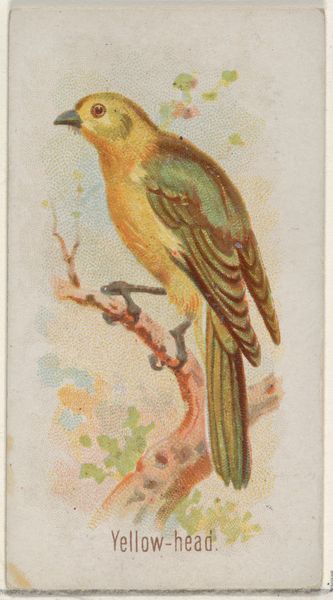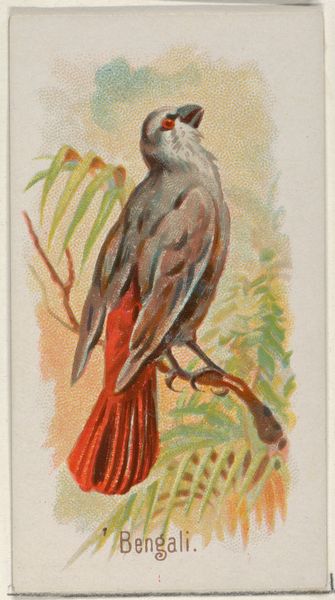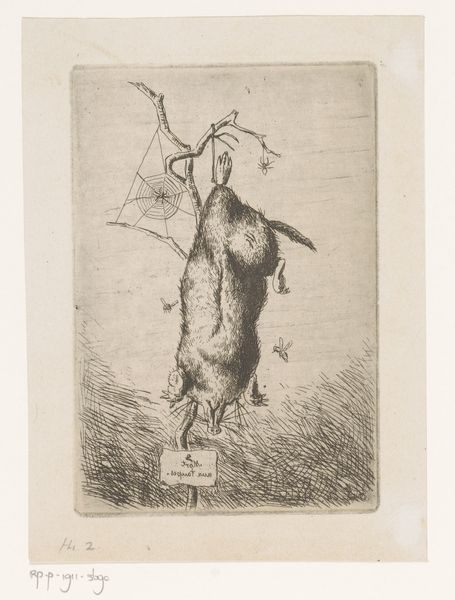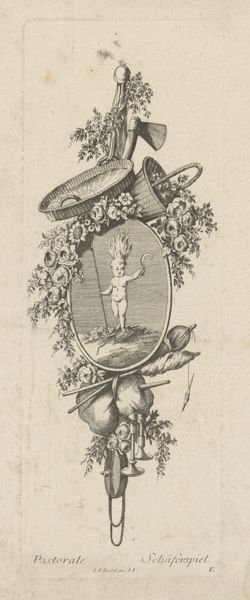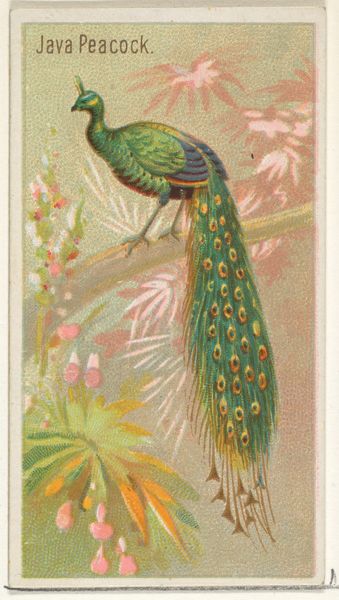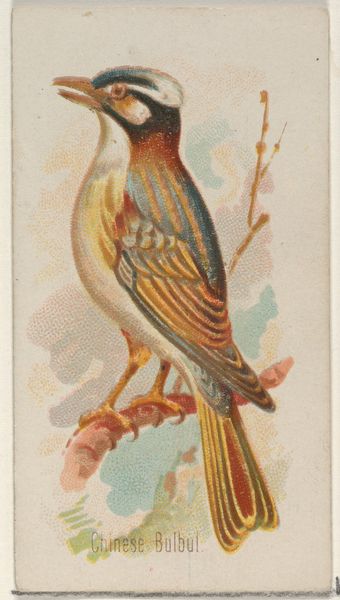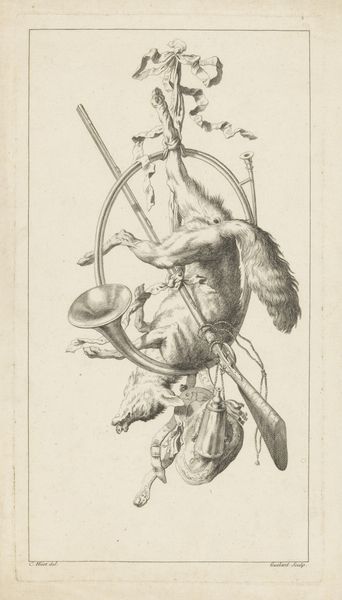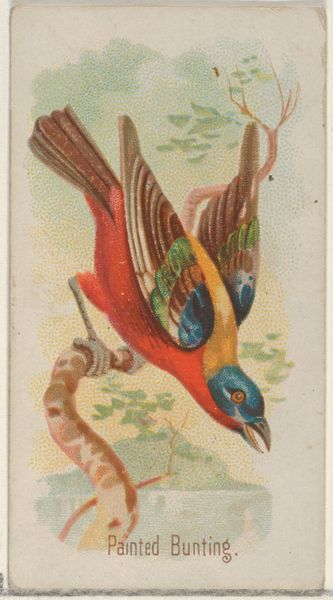
Opossum, from the Quadrupeds series (N21) for Allen & Ginter Cigarettes 1890
0:00
0:00
drawing, coloured-pencil, print, watercolor
#
drawing
#
coloured-pencil
#
animal
# print
#
impressionism
#
watercolor
#
coloured pencil
#
watercolour illustration
#
watercolor
Dimensions: Sheet: 2 3/4 x 1 1/2 in. (7 x 3.8 cm)
Copyright: Public Domain
Curator: This curious little artwork is entitled "Opossum, from the Quadrupeds series (N21) for Allen & Ginter Cigarettes," dating back to 1890. Editor: My first thought is it's…unexpected. The animal, the pose – upside down, dangling! There’s an almost humorous vulnerability to it, juxtaposed against this marketing intention, one presumes. Curator: Indeed. This was actually part of a promotional series for cigarettes. The Allen & Ginter company, popular for its opulent illustrated trade cards. The use of "high art" techniques such as watercolour on such commercial goods gives it an elevated status. Editor: That says a lot about the era, doesn't it? Commodity culture intertwining with idealized nature scenes. Was it intended to depict this exotic, almost mythical view of an 'other' in society, and align it to their product. Curator: Precisely! These cards, often collected and traded, served to disseminate imagery and values to the public. The series included animals from around the world, many then unfamiliar to the average American. So the opossum, depicted here with delicate watercolor brushstrokes and coloured pencil, becomes both a novelty and a symbol. Editor: A symbol of…what, exactly? An accessible and exotic creature? A new consumerism of the time period? Its fragility here also comes to mind with ideas about its ecosystem that could potentially be destroyed for mass markets. Curator: Possibly a combination. There’s a distinct attempt to exoticize the natural world for the purpose of sale and cultural expansion. This card becomes a visual token within a much larger network of advertising and consumer desire. Editor: It certainly shifts my perspective, considering its original purpose. I initially responded to its aesthetic qualities, the soft rendering, the playful subject matter. But the more we analyze, the clearer it is what it implies about exploitation through art during a time of globalized exchange. Curator: And how those systems persist, or become reinvented, is worth remembering when viewing something from another period in time. The history, art and commerce interweave constantly. Editor: So, the next time I'm faced with seemingly quaint picture, it prompts a call to further analyze what power dynamics lurk underneath. To think about who is being represented, how, and for whose benefit.
Comments
No comments
Be the first to comment and join the conversation on the ultimate creative platform.

